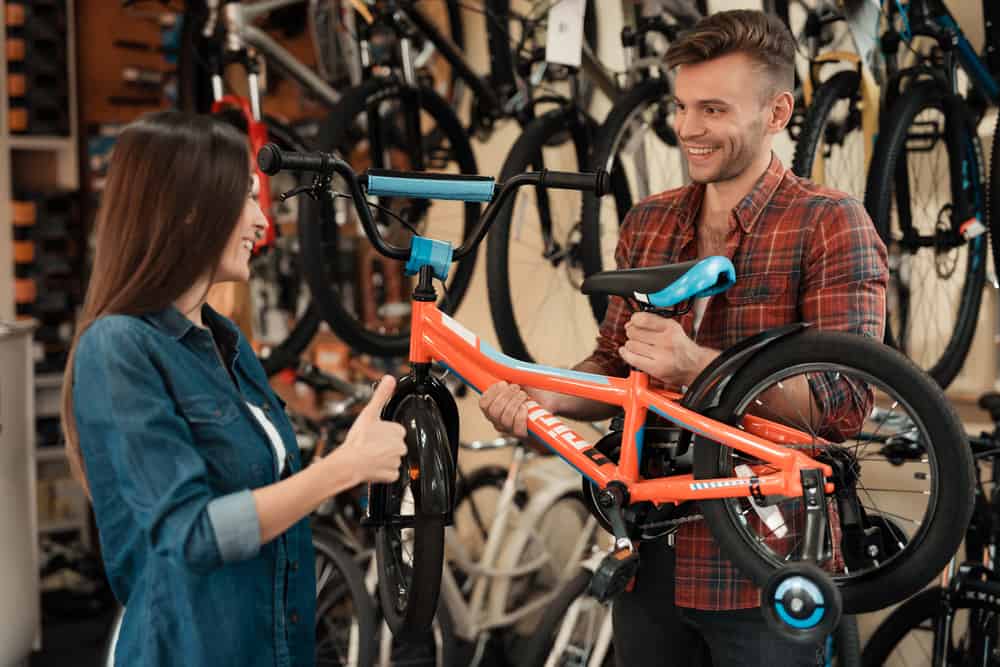Road Bike Sizing Guide: What Size Road Bike For 6’ 6’1 etc.

Growing up, I only had two choices to pump my road bike tires with a hand pump or go down to the gas station and use the air hose. But, of course, cycling has advanced, and you no longer have only two options to inflate a tire but do road bikes need a special pump?
Road bikes need a special pump that can inflate a tire to 120psi. Road bikes exclusively use a French valve, also called a Presta valve, and need a high psi compatible pump to inflate it. The pump must also be able to deflate the tire. They usually have two valve types – Shrader and Presta.
Air hoses at the gas station may have a gauge attached, but they are not calibrated often, so the tire could be over or under-inflated. Either way, it’s a sure way to damage your tires if they are inadequately inflated, and you ride your bike. So let’s see why having the correct pump for your road bike is crucial.
Do Road Bikes Need A Special Pump?
Most road bikes use one of two valves, a Shrader or Presta, and there are compatible pumps that either accompany the bike on purchase. You may purchase an aftermarket pump if the road bike excludes a pump.
Because road bike wheels are typically slim, they require at least 120psi to bear the cyclist’s weight. The two valve types allow for higher pressure in a road bike tire, not only for inflation but deflation if you exceed the maximum pressure.
A good pump is one of the crucial instruments a cyclist will need, even if they do not cycle professionally. Getting a flat tire is always possible; besides your repair kit, you will need a reliable pump.
The best pump for your road bike can inflate the tires to 120psi, so a pump with a 160psi capacity is an excellent choice if you upgrade the bike tires.
Taller, heavier cyclists may need to fit heavy-duty tires on their road bikes. Typically, they would be inflated over 120psi.
How Often Should You Pump Your Road Bike Tires?
If you cycle an average of 10 to 20 miles daily, you should check your tire pressure at least once every seven days. You usually check the tire pressure with a gauge to indicate the psi.
Some pumps can include a pressure gauge, making using one piece of equipment much more manageable than two.
Cyclists that ride further than 200 miles a week should check and pump the road bike tires every two to three days.
Suppose you ride over rougher road surfaces than usual during a route or a ride outside your regular circuit. Check your tire pressure during a stop and pump it up if needed.
A road bike tire that is low on pressure will make peddling harder, and the bike will feel stiff and bumpy. You can damage the rim if you do not pump up a tire low on pressure.

Choosing The Correct Road Bike Pump
Since road bikes only have two types of valves, there should be only two types of pumps, correct? Not exactly. There are dozens of different styles and sizes of pumps for your road bike.
Besides the style, color, and size of your bike, there are different lengths of pumps available, so how do you choose the correct road bike pump?
You can ask the following questions to narrow the search –
A good thing to know is that most road bike pumps have an adapter allowing you to pump up a road bike no matter which of the two valves your tire has.
If you cycle a lot, you should opt for a reliable pump with a built-in gauge. Pumps with a built-in gauge will give an accurate psi reading and save you a lot of time when you’re out on the road. In addition, buying a pump with a built-in gauge is more cost-effective.
If you instead opt for a floor pump, it will not fit into the bike mount where a smaller, more compact pump usually sits. Mini pumps or hand pumps are lightweight and made to fit the mount on your road bike.
New road bike tires will keep pressure better than older tires. Older tires lose pressure faster because they can have tiny perforations the naked eye cannot see, and air can escape. Older road bike tires can reduce pressure by half in as little as two days.
Some mini pumps or hand pumps cannot reach the 120psi required to inflate a road bike tire. Some pumps are limited to 60 or 80psi and will not inflate regular road bike tires.
Newer generation pumps for road bikes can inflate up to 160psi, and these pumps would typically come with a gauge attached.
Replacing Your Road Bike Pump – The Benefits
If your current pump is outdated and you’ve considered getting a new one, consider choosing a new-generation pump. Besides precision, you want an easy-to-use pump and a durable product.
The range of new-generation road bike pumps offers you the following benefits:
Conclusion
You would be mistaken if you thought you could use a BMX or mountain bike tire pump on a road bike. Road bikes need special pumps that fit the Shrader or Presta valves.
Choose a pump that has an adjustable valve head and is compatible with both styles of road bike tire valves.






